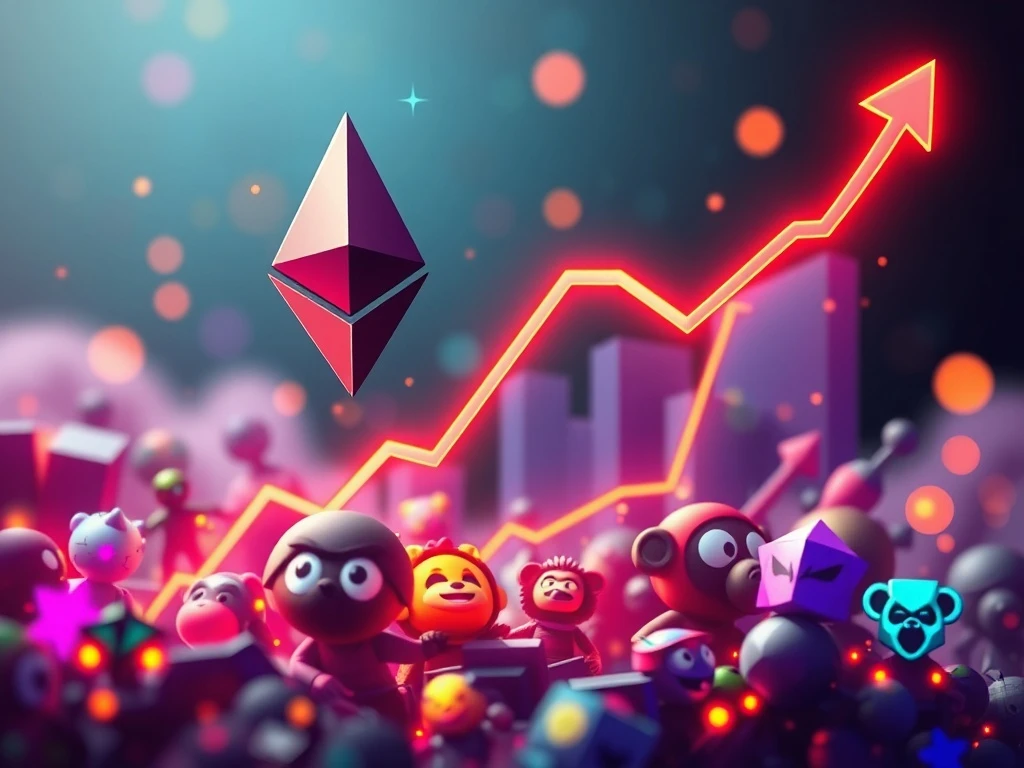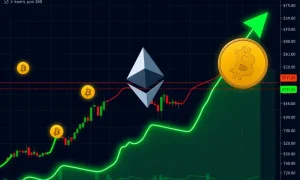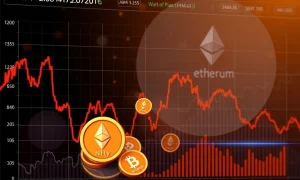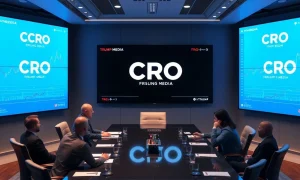The digital asset world is witnessing a remarkable surge. Specifically, the **NFT market cap** has hit an impressive $9.3 billion. This significant milestone highlights a robust expansion within the non-fungible token sector. For entrepreneurs and investors, understanding this growth is crucial. It signals a maturing market with increasing value and activity. This substantial increase is largely driven by the rising price of Ether, the native cryptocurrency of the Ethereum blockchain. Indeed, the connection between Ether’s performance and NFT valuations remains strong. This article delves into the factors behind this astounding growth and spotlights the leading collections shaping the NFT landscape.
The Remarkable Rise of the NFT Market Cap
The **NFT market cap** has experienced an extraordinary upward trajectory. Recent data confirms a substantial increase, reaching over $9.3 billion. This figure represents a notable 40% rise since July. Earlier, DappRadar data indicated a market capitalization of $6.6 billion just last month. This rapid expansion underscores growing investor confidence and wider adoption of digital collectibles. Consequently, many participants are recognizing the long-term potential of NFTs. The sector’s growth is not merely speculative; it reflects tangible value creation and market demand.
A primary catalyst for this surge is the strong performance of Ether (ETH). Ether recently surpassed the $4,000 mark. It now trades above $4,600, boasting a market capitalization exceeding $557 billion. Most NFTs are built on the Ethereum mainnet. Therefore, their sales and valuations are denominated in ETH. A bullish trend for Ether directly translates into higher market values for NFTs. This dynamic fosters increased activity within the NFT space. The top 10 NFT assets by market cap are currently Ethereum-based. This fact further emphasizes Ethereum’s central role in the NFT ecosystem.

Top 10 NFTs by market capitalization. Source: NFT Price Floor
Leading Collections Driving the NFT Market Cap Forward
Several prominent collections are at the forefront of this growth. They significantly contribute to the overall **NFT market cap**. CryptoPunks, for instance, maintains its position as the top NFT collection by market capitalization. NFT Price Floor data shows its worth at least 526,900 ETH. This translates to approximately $2.4 billion. In the last seven days, CryptoPunks generated nearly 4,200 ETH in volume. This volume is worth almost $20 million. During the same week, the collection recorded 90 total sales. Each NFT averaged a sale price of $217,331. Such high values demonstrate the enduring appeal and liquidity of blue-chip NFT assets.
The Bored Ape Yacht Club (BAYC) ranks second in valuation. It boasts a valuation of $602 million. Pudgy Penguins closely follows BAYC with a valuation of $591 million. These collections represent significant segments of the NFT market. Their continued success bolsters the entire sector. While BAYC leads in valuation, Pudgy Penguins has shown impressive recent volume. DefiLlama data indicates Pudgy Penguins had a volume of $8.7 million in the past week. BAYC, conversely, recorded $6.3 million during the same period. This suggests strong trading activity for Pudgy Penguins.

Top NFT collections by seven-day volume. Source: DefiLlama
Strategic Innovations Fueling Growth Beyond the NFT Market Cap
Beyond digital sales, strategic innovations are also fueling the growth of the **NFT market cap**. Pudgy Penguins exemplifies this trend. Luca Schnetzler, CEO and owner of Pudgy Penguins, revealed a pivotal strategy. The collection’s expansion into a physical toy brand saved the company from bankruptcy in 2022. This move diversified its revenue streams. Since then, Pudgy Penguins has emerged as a leading NFT brand. It now rivals other established blue-chip collections. This success story illustrates the potential for NFTs to transcend the digital realm. Physical integrations can unlock new markets and audiences.
Recently, blockchain company BTCS Inc. announced a strategic acquisition. They added three Pudgy Penguins to their corporate treasury. This move highlights a growing trend. Companies are increasingly recognizing NFTs as valuable assets. They integrate them into their balance sheets. This institutional adoption further legitimizes the NFT space. It contributes to its overall stability and perceived value. Such investments signal confidence in the long-term viability of NFTs. They also demonstrate the evolving role of digital assets in corporate finance.

Source: Pudgy Penguins
Other notable collections also contribute significantly to the top 10 **NFT market cap**. These include Art Block’s Chromie Squiggle by Snowfro, Autoglyphs, and Fidenza by Tyler Hobbs. Additionally, Lil Pudgys, Mutant Ape Yacht Club (MAYC), Moonbirds, and Milady Maker feature prominently. Each of these collections offers unique artistic and community value. Their collective success underscores the diversity and vibrancy of the NFT ecosystem. The market continues to evolve, attracting new creators and collectors alike. This dynamic environment fosters continuous innovation and expansion.
The Interplay of Ethereum and NFT Market Dynamics
The symbiotic relationship between Ethereum and the **NFT market cap** cannot be overstated. Ethereum’s robust infrastructure provides the foundational layer for most leading NFTs. As Ether’s price climbs, the perceived value of these digital assets naturally increases. This creates a positive feedback loop. Higher ETH prices incentivize more transactions and greater liquidity in the NFT market. Consequently, this encourages new investors to enter the space. The network effects of Ethereum’s widespread adoption also play a crucial role. Developers continue to build innovative projects on Ethereum. This further strengthens its position as the dominant platform for NFTs. The stability and security of the Ethereum blockchain instill confidence in creators and collectors alike.
Moreover, advancements in Ethereum’s technology, such as the transition to Ethereum 2.0 (now known as the Merge and subsequent upgrades), aim to improve scalability and efficiency. These improvements could further reduce transaction costs and increase throughput. Such enhancements would benefit the NFT market immensely. They would make it more accessible and efficient for a broader audience. Therefore, the future trajectory of the NFT market cap is closely tied to Ethereum’s ongoing development. Continuous innovation on the blockchain promises a sustained growth path for digital collectibles.
Future Outlook for the NFT Market Cap
The current surge in the **NFT market cap** indicates a promising future. However, the market remains dynamic and subject to various influences. Regulatory clarity, technological advancements, and broader cryptocurrency market trends will all play significant roles. As more mainstream brands and institutions enter the space, the utility and adoption of NFTs could expand even further. This could include real-world applications beyond digital art and collectibles. For instance, NFTs could be used for ticketing, digital identity, or supply chain management. This expanded utility would naturally drive up demand and value.
The market’s ability to innovate and adapt will be key to sustained growth. Projects that offer unique value propositions and foster strong communities are likely to thrive. The success of Pudgy Penguins demonstrates the importance of creative strategies. Integrating digital assets with physical products can unlock new opportunities. This adaptability is vital for navigating market cycles. Overall, the current momentum suggests a period of robust expansion for the NFT sector. Investors and enthusiasts should continue to monitor key metrics. The market’s evolution promises exciting developments in the digital economy.
The remarkable ascent of the **NFT market cap** to $9.3 billion signals a new era for digital assets. This growth is largely propelled by the impressive performance of Ether. Leading collections like CryptoPunks, Bored Ape Yacht Club, and Pudgy Penguins continue to dominate. Their innovative strategies further cement their positions. As the ecosystem matures, the interplay between blockchain technology and creative applications will drive future value. This ongoing evolution offers significant opportunities for both creators and investors in the burgeoning NFT space.
Frequently Asked Questions (FAQs)
What is the current NFT market cap?
The current **NFT market cap** has reached over $9.3 billion. This marks a significant 40% increase since July. This figure reflects the total valuation of all non-fungible token collections combined.
How does Ether’s price affect the NFT market cap?
Ether’s price directly influences the **NFT market cap** because most NFTs are built on the Ethereum blockchain. Their values are often denominated in ETH. When Ether’s price rises, the equivalent dollar value of NFTs also increases, driving up the overall market capitalization.
Which NFT collections are leading the market by market cap?
CryptoPunks holds the top spot by market capitalization. The Bored Ape Yacht Club (BAYC) and Pudgy Penguins follow closely behind. These collections consistently demonstrate high trading volumes and significant valuations.
What strategic moves are NFT projects making to sustain growth?
Some NFT projects are expanding beyond digital assets. For example, Pudgy Penguins ventured into physical toy brands. This diversification creates new revenue streams and reaches broader audiences. Companies are also adding NFTs to their corporate treasuries.
What factors could influence the future of the NFT market cap?
The future of the **NFT market cap** will depend on several factors. These include regulatory developments, technological advancements in blockchain, and broader cryptocurrency market trends. Increased institutional adoption and innovative real-world applications for NFTs will also play a crucial role.








